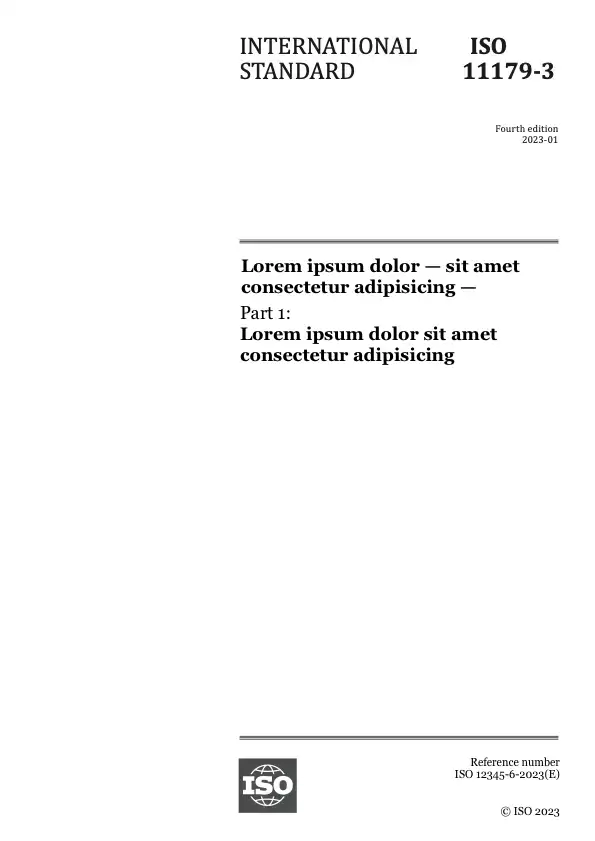Abstract
This document applies to the basic safety and essential performance of an EMS ventilator in combination with its accessories, hereafter also referred to as ME equipment:
¾ intended for patients who need differing levels of support from artificial ventilation including ventilator-dependent patients;
¾ intended to be operated by a healthcare professional operator;
¾ intended for use in the EMS environment; and
¾ intended for invasive or non-invasive ventilation.
NOTE 2 An EMS ventilator can also be used for transport within a professional healthcare facility.
An EMS ventilator is not considered to use a physiologic closed loop-control system unless it uses a physiological patient variable to adjust the artificial ventilation therapy settings.
This document is also applicable to those accessories intended by their manufacturer to be connected to the ventilator breathing system, or to an EMS ventilator, where the characteristics of those accessories can affect the basic safety or essential performance of the EMS ventilator.
NOTE 3 If a clause or subclause is specifically intended to be applicable to ME equipment only, or to ME systems only, the title and content of that clause or subclause will say so. If that is not the case, the clause or subclause applies both to ME equipment and to ME systems, as relevant.
Hazards inherent in the intended physiological function of ME equipment or ME systems within the scope of this document are not covered by specific requirements in this document except in IEC 60601‑1:2005+AMD1:2012+AMD2:2020, 7.2.13 and 8.4.1.
NOTE 4 Additional information can be found in IEC 60601-1:2005+AMD1:2012+AMD2:2020, 4.2.
This document does not specify the requirements for the following:
NOTE 5 See ISO/TR 21954 for guidance on the selection of the appropriate ventilator for a given patient.
¾ ventilators or accessories intended for ventilator-dependent patients in critical care applications, which are given in ISO 80601-2-12.
¾ ventilators or accessories intended for ventilator-dependent patients in the home healthcare environment, which are given in ISO 80601-2-72.
¾ ventilators or accessories intended for anaesthetic applications, which are given in ISO 80601‑2‑13.
¾ ventilators or accessories intended for ventilatory support equipment (intended only to augment the ventilation of spontaneously breathing patients), which are given in ISO 80601‑2-79 and ISO 80601-2-80.
¾ obstructive sleep apnoea therapy ME equipment, which are given in ISO 80601‐2‐70.
¾ user-powered resuscitators, which are given in ISO 10651‐4.
¾ gas-powered emergency resuscitators, which are given in ISO 10651‐5.
¾ continuous positive airway pressure (CPAP) ME equipment.
¾ high‐frequency jet ventilators (HFJVs), which are given in ISO 80601-2-87.
¾ high‐frequency oscillatory ventilators (HFOVs)[44], which are given in ISO 80601-2-87.
NOTE 6 An EMS ventilator can incorporate high-frequency jet or high-frequency oscillatory ventilation-modes.
¾ respiratory high-flow therapy equipment, which are given in ISO 80601-2-90.
NOTE 7 An EMS ventilator can incorporate high-flow therapy operational mode, but such a mode is only for spontaneously breathing patients.
¾ oxygen therapy constant flow ME equipment.
¾ cuirass or “iron‐lung” ventilators.
Read sample
General information
-
Status: PublishedPublication date: 2023-11Stage: International Standard published [60.60]
-
Edition: 2Number of pages: 138
-
Technical Committee :ISO/TC 121/SC 3ICS :11.040.10
- RSS updates
Life cycle
-
Previously
WithdrawnISO 80601-2-84:2020
-
Now
Got a question?
Check out our FAQs
Opening hours:
Monday to Friday - 09:00-12:00, 14:00-17:00 (UTC+1)

